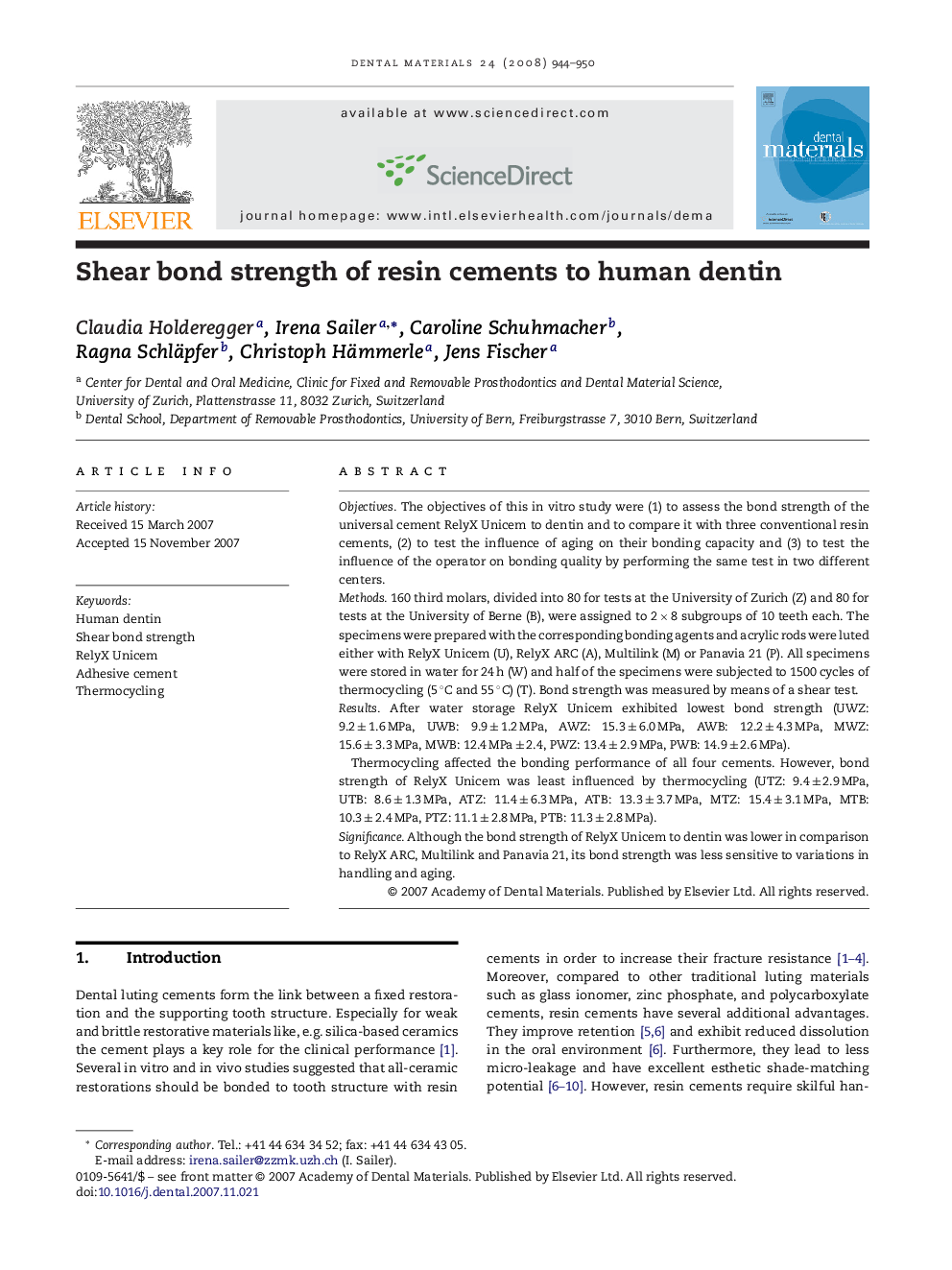| Article ID | Journal | Published Year | Pages | File Type |
|---|---|---|---|---|
| 1422990 | Dental Materials | 2008 | 7 Pages |
ObjectivesThe objectives of this in vitro study were (1) to assess the bond strength of the universal cement RelyX Unicem to dentin and to compare it with three conventional resin cements, (2) to test the influence of aging on their bonding capacity and (3) to test the influence of the operator on bonding quality by performing the same test in two different centers.Methods160 third molars, divided into 80 for tests at the University of Zurich (Z) and 80 for tests at the University of Berne (B), were assigned to 2 × 8 subgroups of 10 teeth each. The specimens were prepared with the corresponding bonding agents and acrylic rods were luted either with RelyX Unicem (U), RelyX ARC (A), Multilink (M) or Panavia 21 (P). All specimens were stored in water for 24 h (W) and half of the specimens were subjected to 1500 cycles of thermocycling (5 °C and 55 °C) (T). Bond strength was measured by means of a shear test.ResultsAfter water storage RelyX Unicem exhibited lowest bond strength (UWZ: 9.2 ± 1.6 MPa, UWB: 9.9 ± 1.2 MPa, AWZ: 15.3 ± 6.0 MPa, AWB: 12.2 ± 4.3 MPa, MWZ: 15.6 ± 3.3 MPa, MWB: 12.4 MPa ± 2.4, PWZ: 13.4 ± 2.9 MPa, PWB: 14.9 ± 2.6 MPa).Thermocycling affected the bonding performance of all four cements. However, bond strength of RelyX Unicem was least influenced by thermocycling (UTZ: 9.4 ± 2.9 MPa, UTB: 8.6 ± 1.3 MPa, ATZ: 11.4 ± 6.3 MPa, ATB: 13.3 ± 3.7 MPa, MTZ: 15.4 ± 3.1 MPa, MTB: 10.3 ± 2.4 MPa, PTZ: 11.1 ± 2.8 MPa, PTB: 11.3 ± 2.8 MPa).SignificanceAlthough the bond strength of RelyX Unicem to dentin was lower in comparison to RelyX ARC, Multilink and Panavia 21, its bond strength was less sensitive to variations in handling and aging.
